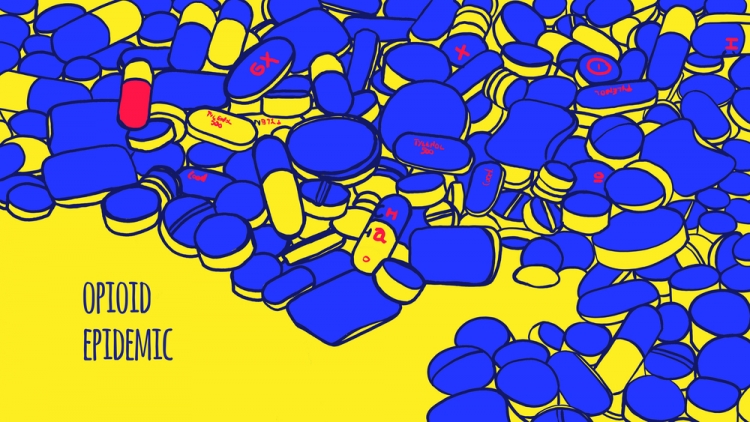The Dark Side of Painkillers

Drug addiction can happen to anyone. It knows no race, gender, income bracket, state of health, or any other category you can think of. It is one of the few things in life anybody can succumb to. This is why it's so prevalent.
I’m usually not one to share personal stories, but something happened on Nov. 30, 2016 that irrevocably altered my life. We all have a friend who struggles with one thing or another. I had a close friend who was struggling with drug addiction. He had it all, a great family, lots of friends, he was attractive, smart and kind — not the typical picture of a drug user you see in movies and the media. But he had a secret kept from almost everyone. He was struggling with a disease that most people don’t acknowledge: drug addiction. And he paid the ultimate price for it.
Why am I sharing this story? This is a topic usually people shy away from, believing that only the poor and destitute turn to drugs. But nothing could be further than the truth. The stigma around this topic needs to be broken. We need to talk about and make it as normal as any other disease, because if we don’t, drug users will keep hiding, not seeking the help they need, and we will never see a stop the rising overdose death toll.
Image Credit: Shutterstock/Marjan ApostolovicThe current opioid epidemic is the deadliest drug crisis in American history. From 1999 to 2015, more than 183,000 people have died in the U.S. from overdoses related to prescription opioids. Overdoses fueled by opioids are the leading cause of death for Americans under 50 — killing roughly 64,000 people last year, more than guns or car accidents, and doing so at a pace faster than the HIV epidemic at its peak. Overdose deaths involving prescription opioids have quadrupled since 1999. So have sales of these prescription drugs. This correlation between the sales of prescription drugs and the overdose rise is not a coincidence. As many as 1 in 4 people who receive prescription opioids long term for non-cancer pain in primary care settings struggle with addiction.
Before the 1990s, strong pain killers such as OxyContin were used to ease serious ailments such as cancer pain. Beginning in the mid-1990s, however, these pills were marketed as an “everyday” remedy for chronic pain, such as pain from back or neck injuries. Today you can even these painkillers following a simple procedure such as removal of one’s wisdom teeth. I was personally offered a slew of similar options to this one when I had mine removed.
Image redit: Shutterstock/Pavel ChagochkinThe same medicine that was given to me after three spinal surgeries was being offered for a non-invasive procedure. I was appalled and what was even more upsetting was the doctor would not leave me leave the room until I was prescribed something, therefore forcing me to pick out my own pain killer. This attitude toward these drugs is one of the causes that has lead the current epidemic we have today.
The government’s account of drug deaths in 2016 was the first national data to break down the growth by drug and by state, which revealed that deaths involving synthetic opioids, mostly Fentanyl, had risen 540 percent in just three years. Dealers are embracing the dark web to anonymously send powerful synthetic opioids such as Fentanyl to nearly every region of the country. Fentanyl is a fully synthetic opioid, originally developed as a powerful anesthetic for surgery.
It is also administered to alleviate severe pain associated with terminal illnesses like cancer. The drug is up to a hundred times more powerful than morphine. Just a small dose can be deadly. Illicitly produced Fentanyl has been a driving factor in the number of overdose deaths in recent years. This is the drug that cost my friend his life at only 25 years old.
Image Credit: Shutterstock/Photographee.euThis epidemic is the elephant in the room — we know it's there, we just don't acknowledge it. The fact is more than twenty million Americans and their families living with an addiction need treatment and recovery support services now. President Trump called for a national public health emergency concerning the opioid crisis. But this isn't enough, we need to be more demanding and claim this as a national health emergency and finally get the funding we need to treat millions of people.
So many lives can be saved if we just lose the stigma and change the way we see addicts. My friend’s mother and brother started an organization to do just this. They run marathons across America to bring awareness to this deadly disease. G’s Angels is the name of the organization, which you can find on Facebook and Instagram. We need more people to get involved and this is just one of the ways we can do it.
Image Credit: G's Angels Facebook Page










